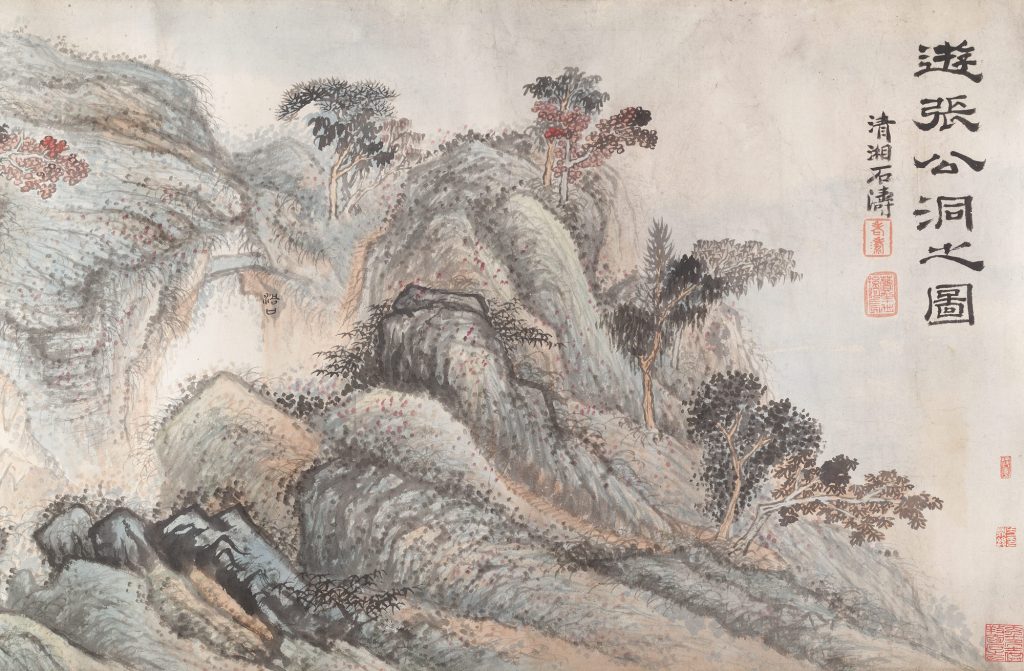With every bad situation there is a good side, but with every good situation there is a bad side.
Everyone has heard some variation of this cliché before, but where does this idea come from? It comes from an ancient Chinese philosophy that has influenced China since the sixth century BCE, namely, the belief system of Daoism.

The Chinese philosophy of Daoism is the “teaching of the way.” The Dao is the way in which things come together while constantly changing. This idea reflects an inherently Chinese belief that change is fundamental to life. The hexagrams are the correlative relationships that symbolize the patterns of change in Daoism. They are contradictory elements but are necessary for the flow of reality. This is where the concept of yin and yang comes from. Hexagrams are figures that are made up of six lines, with broken lines representing yin and the solid lines representing yang. Yin and yang is the principle of all things that exist, that all things are inseparable and contain contradictory opposites. Water/fire, earth/heaven, wind/thunder, hot/cold, are all examples of these inseparable opposites. One is not superior to the other, and an increase in one brings a decrease in the other. Harmony is achieved by complete balance between the two opposites.1

Daoism was a response to the disorder of the late Zhou Dynasty. Although it was a time of political distress, it led to people reflecting on roles of humans in society. Some wanted to reconstruct the political and social order of China, such as Confucianism, while others wanted to explore individual peace separate from society, such as Daoism.2
The Daodejing contains the most fundamental teachings of Daoism. The oldest texts from the Daodejing date back to the 4th Century B.C.E. It is where the concept of yin and yang comes from. It also teaches that humans should not tamper with the flow of reality, also known as wu-wei or “effortless action.” The Daodejing teaches that wu-wei should guide people’s lives. When something happens that may seem unfair, people should remember that the way of heaven or dao of tian never misses anything or leaves anything undone. In other words, everything happens for a reason and nothing happens incompletely.3

Laozi is credited with founding Daoism. He is veiled in mystery, since there is no solid record of Laozi ever existing. Some say he lived in sixth century B.C.E.; however, there is no record of a man named Laozi as the founder of Daoism. Laozi means “Old Master,” and he is believed to have written the Daodejing, but there is much debate about whether or not the Daodejing was written by one person or many. Regardless of all the speculation surrounding Laozi, he is still venerated as a philosopher by Confucians, and he was even worshiped as an imperial ancestor during the Tang Dynasty 618–907 C.E.4
Daoism influenced Chinese arts. Some of the oldest spiritual books received their influence from the pictures of Daoist temples. Daoist illustrations also influenced the desire to draw technical drawings, so it influenced a high level of botanical and mineralogical drawings. Calligraphy also has its influence from Daoism; Wang Xizhi is known as one of the greatest calligraphers of all time.5
Daoism focuses on ways of living that is separate from society. It teaches people to just let life happen, since there is a reason for everything that happens. Daoism influenced peoples’ thinking when it first emerged, and even now in modern society. Taiwan is where Daoism is still widely popular, and many temples have been restored to maintain the practice of the way.6
- Internet Encyclopedia of Philosophy, 2016, s.v. “Daoist Philosophy” by Ronnie Littlejohn ↵
- Jerry Bentley, Herbert Ziegler, and Heather Streets Salter, Traditions & Encounters: A Brief Global History, Volume 1, 3 edition (McGraw-Hill Higher Education, 2013), 1o2. ↵
- Internet Encyclopedia of Philosophy, 2016 s.v.”Daoist Philosophy” by Ronnie Littlejohn. ↵
- Encyclopedia Britannica, 2016 s.v. “Laozi, Chinese Daoist Philosopher ” by Roger T. Ames and Max Kaltenmark. ↵
- Encyclopedia Britannica, 2016, s.v. “Daoism – Influence” by Roger T. Ames, Anna K. Seidel, and Michel Strickmann. ↵
- Encyclopedia Britannica, 2016, s.v.”Daoism- Influence” by Ames, Seidel, and Strickmann ↵



32 comments
Alyssa Valdez
I thought this article was a very interesting read and very informative! I had no idea that the Yin and Yang symbol came from this and had much more meaning then I thought! I thought it was interesting that how it refers to that one should not tamper with the flow of reality. I can tell you put a lot of time research and that you enjoyed writing this article! I am not much more interested in Daoism! Thanks for the read! It was great!
Faisal Alqarni
Hello Alyssa, I love your piece I knew very little about Daoism before this but I did know about the different elements been interconnected as well as the Ying and Yang harmony but not so much as about the Hexagrams and how yang and yang fit into it. I like that Chinese people came up with Daoism in a time of turmoil in their effort to find their equilibrium.
Gabriela Serrato
I found this article to be so amazing. It really shed such a beautiful light onto Daoism. I find the harmonious teachings to be so enlightening. I even found some joy in reading about it because this is a great belief to be under as it spreads the thought that everything happens for a reason. The entire concept of yin and yang really does fascinate me and the idea that “With every bad situation there is a good side, but with every good situation there is a bad side.” This actually provides comfort because it is true that in life, you cannot understand happiness without feeling sadness, and you cannot feel sadness without knowing happiness.
Teresa Valdez
This is a great insight into the culture of Daoism. The philosophy of Daoism seems very satisfying, giving reason behind everything. I liked how you included little bits of information, like the nod to calligraphy. It made the article very rich in information.The mystery behind Laozi is so intriguing, considering that he is the founder of this way of life, but only his followers seem to acknowledge his existence.
Tina Valdez
Wow, I found this incredibly interesting. Before reading your article, I knew only that Laozi is credited with the founding of Daoism and very little detail behind the belief system. I find it interesting that much of what we see was influenced by Daoism such a s calligraphy. Your article was full of interesting facts!
Christian Lozano
Such a beautiful thing Daoism is, having read the Tao Te Ching, it is really a great way to view the universe and ourselves. For sure, practicing true Daoism might seem crazy to western society, but it really is what many of the most profound spiritual teachings present. Which is to let go, and remove the Ego, to remove the Self, is to become one with, The Way.
Mehmet Samuk
Very interesting article. I was always curious about Daoism and Ying Yang. I even had a necklace of them but I did not know the true meaning until reading your article. It was very interesting and informative. Good Job!!
Amanda Cantu
This was a great article! It was very informative about the whole idea of Daoism. To be fair I had no idea what it even was before I read your article. The only thing I honestly knew was about yin and yang and that was even just a little bit of information. I always believed in the idea that everything happens for a reason and it was super interesting being able to read some history of it from a different perspective.
Aurora Torres
Wow, never knew where the yin yang came from or what it meant. Interesting how it refers to that one should not tamper with the flow of reality. To me that means let things be how they come and accept them. Also, the art in the drawings are very creative simple but interesting. Thanks for the article.
Jezel Luna
Reading this article, I did not accept to find out that yin and yang came from this approach. I’ve always believed in the saying that “everything happens for a reason”, but more so towards, I believe that God has a plan for all of us. I found it very intriguing that the teachings of Daoism kind of related to this as well. Laozi, is the person who supposedly founded Daoism and the fact that can’t even identify him is so surprising. This was definitely an informative article!